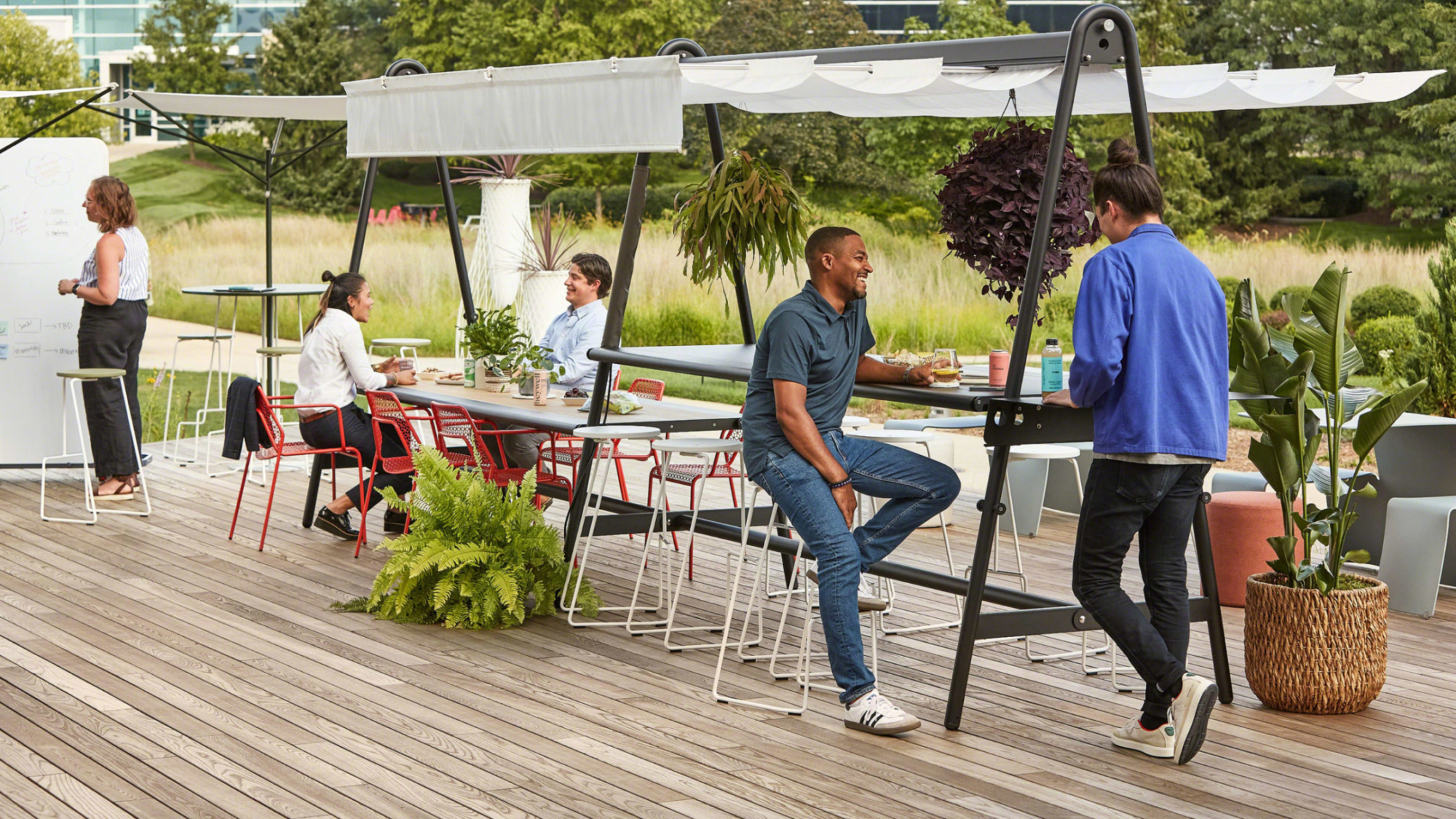How to create compelling destinations where everyone can contribute

How, when and where people work is evolving rapidly. There is a need for the workplace to merge the benefits of technology with the talents of people. This must be done in a manner that is adaptable, human-centered, and inclusive. Steelcase partnered with G3ict, the Global Initiative for Inclusive Information and Communication Technologies, to conduct quantitative and qualitative research to release a Blueprint for Inclusive Workplaces of the Future.
“We wanted the blueprint to be both a vision of the future and a resource to establish a shared understanding of all the factors that shape workplaces around the world,” says Kim Dabbs, Steelcase vice president of social innovation. “We worked together with G3ict to engage a wide variety of stakeholders so we could offer some recommended actions we hope will lead to more inclusive, safe and compelling workplaces for everyone.”
ACCESS THE FULL REPORT
Dive deeper into our research, findings and insights around inclusive workplaces of the future.
The project focused on persons with disabilities to provide a focal point for what it means for workplaces to be inclusive, safe and compelling. For this Blueprint, disability is defined as “those who have long-term physical, mental intellectual or sensory impairments which in interaction with various barriers may hinder their full and effective participation in society on an equal basis with others.”[i]
The disability community uniquely represents the intersection of every aspect of diversity with representation across demographics. They include age, disability type, economic situation, educational attainment, ethnicity, gender identity and race.[ii] In addition, research shows persons with disabilities have been hit harder than most during the pandemic. In the U.S., one in five workers with disabilities lost their jobs during the onset of the pandemic. These inequalities are expected to be exacerbated long-term.[iii][iv]
Research included a literature review, a global survey, a series of human-centered design roundtable sessions with a curated group of experts and individual qualitative interviews.
KEY FINDINGS INCLUDE:
Only 49% say their industry has a clear and shared understanding of an inclusive workplace. That is compared to 64% for safe, and 53% for compelling.[v]
The top three elements essential to an inclusive workplace are identified as:
- 61% – Representation and diversity across all functions and levels
- 45% – Accessible products, technology and systems
- 45% – Accessible physical space
Respondents with disabilities ranked both accessible technology and space above representation.
The primary outcomes of an inclusive workplace are identified as:
- 80% – Increased employee satisfaction
- 65% – Increased innovation
- 53% – Increased productivity for individuals and teams
“We knew it was important in this initiative to meld the data with people’s lived experiences,” says James Thurston, G3ict vice president for global strategy and development. “We’re incredibly grateful to our roundtable and interview participants who dedicated so much time, passion and expertise to the project.”
In addition to data, the blueprint uses a concept map to identify opportunities and challenges within the workplace. It also uses stakeholder and ecosystem maps to identify critical groups that impact the workplace, their dependencies and connections. Finally, it offers a detailed analysis of 14 different stakeholder groups along with several recommended actions for each.
Steelcase and G3ict are making the blueprint publicly available. Their goal is advancing the conversation about how to create inclusive, safe and compelling workplaces in organizations around the world.
“Workplaces of the future must be compelling destinations where every team member can contribute, not despite their unique identities – but because of them.”
Kim Dabbs | Steelcase VP Social Innovation
“We know there is a lot more work to be done and we hope this blueprint helps to chart a positive path forward,” says Dabbs.
Receive our Newsletter
To receive our newsletter, including new editions of spaces and other digital content, fill out the form:



